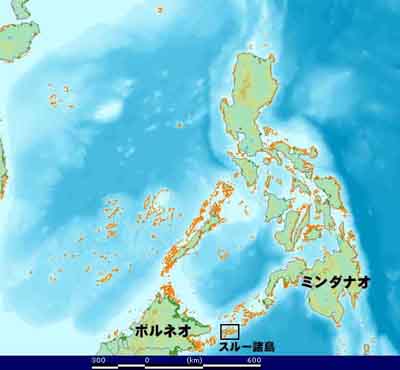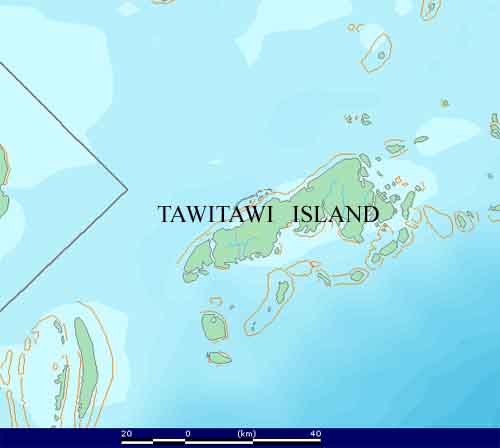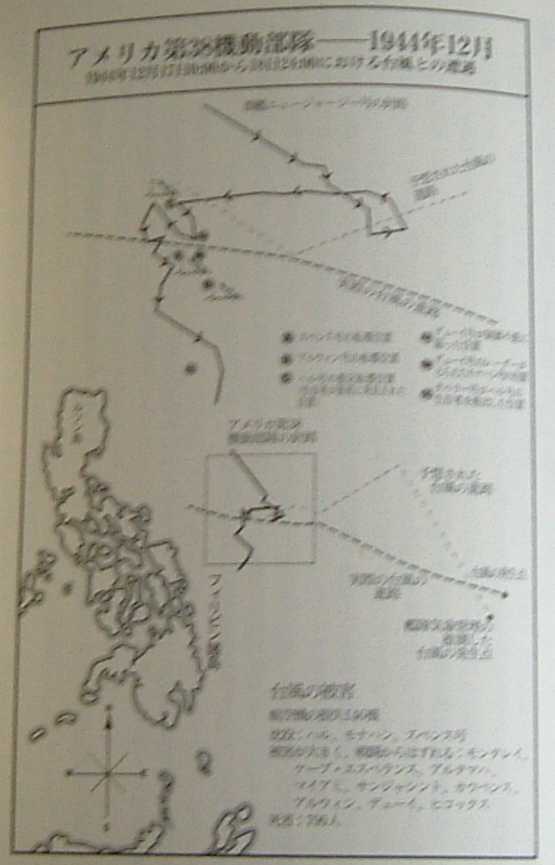This page contains kanji.
| IJN | USN | |
| Destroyer | 14 | 176 |
| Torpedo boat | 8 | unknown |
| Escort aircraft carrier | 0 | 1 |
| Destroyer escort | 0 | 103 |
| Total | 22 | 280 |
Morimoto, p110-111
The table shows escort forces of IJN and USN for merchant ships at the Pacific War break[6][7]. The USN data was in June 1941. IJN had 4 destroyer escorts (kaiboukan) which were Shimushushu (Àê¼é), Kunashiri (¹ñ¸å), Hachijou (Ȭ¾æ) and Ishigaki (ÀгÀ). But they were originally for defence of fishery rights in the north. Shimushushu took part in Malay invasion operation[9]. The 4 destoryer escorts were to protect fishery boats in the North Pacific originally. The specifications were displacement 1,020t, speed 19.7kt, range 8,000nm at 16kt, armament 3 guns of 12cm and 12 depth charges. The destroyer escorts removed a paravane and increased 12 depth charges in May 1942. The number of depth charges was 60 in fall 1943.
The other 3 destroyer escorts engaged in defending Tsugaru Strait and escorting convoys for Chishima islands. The 5th destoryer escort was commisioned in March 1943.
Three IJN old destroyers were belonged Kure Naval Base. They were Nokaze (ÌîÉ÷), Namikaze (ÇÈÉ÷), Numakaze (¾ÂÉ÷)[5]. The escort warships increased to 26[8] on 10 April 1942.
-
Morimoto wrote different 55 IJN escort warships from Ooi's 22.
| Singapore | Truk | |
| Destroyer | 10 | 4 |
| Torpedo boat | 2 | 2 |
| Aux Gun boat | 5 | 1 |
| Total | 17 | 7 |
IJN also had 24 submarine chasers which had 460t of displacement and 36 depth charges. But these were uncapable of running the open sea.
IJN destroyer escorts shipbuilding and loss
| Year | Building | Lost | Fleet |
| 1942 | 0 | 0 | 4 |
| 1943 | 15 | 2 | 17 |
| 1944 | 101 | 20 | 98 |
| 1945 | 51 | 50 | 99 |
Ooi p.95-97
IJN planned to build 30 destroyer escorts in July 1941. But the destroyer escort #1 wast to launch in 1945 at first. The destroyer escort was laid down in 1942 because IJN had reported an optimistic merchant ships loss. But the loss increased in 1943. So IJNGS made a proposal for building 360 destroyer escorts. Itoh reported that 360 destroyer escorts and 2,000 aircraft were necessary to suppress merchant ships loss within 30,000 gross ton a month in a meeting with Government and IJA on September 1943. IJN admitted building them quickly. It planned 114 destroyer escorts in 1943, 188 in 1944 and 130 in 1945. The result was only 175 of 446. It was late to build and Japan had no power to build destroyer escorts enough to protect her own merchant ships after all. Japan failed to ASW completely. While USN built 426 destoryers and destroyer escorts in 1943[2]. IJN built 15 only. IJN thought USN would give up the Pacific War soon, didn't it?
Morimoto, p126
Oui, p111
Kansen, p143, No507
When WWII broke up, RN had 140 warships for escort. RN had built 79 corvettes, 26 sloops, 200 frigates and 88 destroyer escorts since 1941. The total were 393. US gave UK 50 old destroyers and 84 destroyer escorts. RN had 486 desstroyer escorts and 40 escort aircraft carriers in the end of WWII[3].
| Speed [kt] | 10 | 15 | 18 | 24 | 28 | 30 | 34 |
| 2nd Range [nm] | 5,700 | 4,623 | 4,000 | 2,804 | 2,044 | 1,675 | 960 |
| 3rd Range [nm] | 5,700 | 4,364 | 3,512 | 2,148 | 1,540 | 1,310 | 960 |
| 2nd Fuel [nm/t] | 11 | 9.2 | 8.0 | 5.6 | 4.1 | 3.5 | 1.9 |
| 3rd Fuel [nm/t] | 11.4 | 8.7 | 7 | 4.3 | 3.1 | 2.6 | 1.9 |
Drag force is proportional to speed by Newton's law. The drag force is proportional to square of speed considering area effect of the body. I computed fuel comsumption rate of Asashio by 2nd order (square) interpolating function. Considering the work of engine, drag force D is,
-
D = kv²
Dds = kv²ds ( ds is infinitive length )
dW = Dds
dW/dt = kv²ds/dt ( dt is infinitive time )
P = kv³ (dW/dt = P, ds/dt = v)
-
Range = k/(v³-h)
-
24 kt for 5 hours 120 nm 21 t
28 kt for 5 hours 140 nm 34 t ( Kaga's max speed )
? 110 nm 14 t ( in case of 18 kt )
26 kt for 5 hours 130 nm
20 kt for 6 hours 120 nm
Light cruiser Abukuma refueld on 30 November, 1, 2, 5, 6 and 7 December. Why did Abukuma refuel with capacity of 1,260 t seven times in spite of 5,000 nm range at 14 kt? IJN range data of warships were planned values. The displacement of Abukuma increased 1,500 t comparing with the original 5,500 t[4]. The range might decrease 27 % at least. After all, speed of the KB was limited by aircraft carrier Kaga, and freedom of the operation was limited by the fuel capacity of Kagero class destroyers.
| Operaion | Fleet | Carriers | Destroyers | Ratio |
| Okinawa | TG58-1 | 5 | 21 | 4.2 |
| TG58-2 | 3 | 8 | 2.7 | |
| TG58-3 | 5 | 17 | 3.4 | |
| TG58-4 | 4 | 18 | 4.5 | |
| TG52-1 | 7 | 17 | 2.4 | |
| TG52-2 | 7 | 10 | 1.4 | |
| TG52-3 | 4 | 7 | 1.8 | |
| Ref. Yomitan history, ASW | ||||
| Operaion | Fleet | Carriers | Destroyers | Ratio |
| Pearl | KB | 6 | 9 (7) | 1.5 |
| Mariana | 1Sf | 3 | 13 | 4.3 |
| 2Sf | 3 | 8 | 2.7 | |
| Ref. Genda p.274 | ||||
Though 2 battle cruisers, 2 heavy cruisers and 1 light cruiser also escorted, they had no depth charges for ASW. IJN thought that USN submarines were not threat because of unknown operation, didn't it? The table shows ratio of destroyers per carrier. Some historians criticizes that the KB should do the third air strike. Could only 7 destroyers shield 6 aircraft carriers effective?
 |  |
| Location | Tawi-tawi |
IJN selected Tawi-tawi as anchorage port of 1st Kido Fleet. Saipan is nearer to Japan than Taui. The reasons were,
- Gunreibu guessed USN would invade Palau at first
- Shortage of oilers was to anchor near oil export
1st Kido Fleet came to Tawi-tawi on May 13th. It was necessary for pilots of carriers to train landing everyday etc. Carriers could not run to train pilots out of the port freely, becasue submarines were hiding. So 1st fleet ordered destroyers to sweep submarines. 4 destroyer were sunk one by one for 4 days. These were Minazuki, Hayanami, Kazakumo and Tanikaze. Ooi p.238-241
Sonars of the destroyers were worse than US submarines. I do not know how each destroyer repeated failure of anti submarine combat. The below is image of the Tawi-tawi Bay
| Type | Year | Decending speed | Set of Depth [m] | Explosive | Weight | Length | Diameter |
| Type 95 | 1937 | 1.9m/s | 30, 60 | 100kg | 160kg | 775mm | 450mm |
| Type 2 | 1942 | 2.0m/s | 30, 60, 90, 120, 150 | 100kg | 162kg | 775mm | 450mm |
| Type 3 | 1943 | 5.0m/s | 40, 80, 120, 160, 200 | 100kg | 180kg | 1400mm | 450mm |
The production of depth charges was as follows. Strangely production of 1943 decreased. Was production of Type 3 depth charge in 1944 actually?
| Year | 1936 | 1937 | 1938 | 1939 | 1940 | 1941 | 1942 | 1943 | 1944 | 1945 |
| Number | 3,100 | 7,000 | 8,000 | 12,000 | 20,000 | 36,000 | 80,000 | 60,000 | 161,000 | 12,000 |
| Rate | - | 1.26 | 0.14 | 0.50 | 0.67 | 0.80 | 1.22 | -0.25 | 1.68 | -0.93 |
Gunzo, p5-11, No74
Bakurai ichiran
Goei heiki

|
Weather, p
Typhoon Cobra(1944)
 |
Gunzo, p22-27 No94
[1] Jentschura p.147
[2] Koei p.20
[3] Sensou to sekiyu (4)
[4] Nagara gata no kindaika
[5] Shinjyu-wan kougeki
[6] Sekai no hinode-hinoiri
| Year | Date | IJN | USN | ||
| number | ton | number | ton | ||
| 1941 | Dec08 | 237 | 1,001,000 | 345 | 1,439,000 |
| Dec10 | 236 | 1,000,000 | 341 | 1,313,000 | |
| 1942 | May31 | 235 | 1,100,000 | 368 | 1,471,000 |
| Jun07 | 230 | 1,004,000 | 366 | 1,449,000 | |
| Jul31 | 232 | 1,030,000 | 393 | 1,595,000 | |
| 1943 | Feb08 | 212 | 1,007,000 | 457 | 1,810,000 |
| 1944 | Jan08 | 208 | 996,000 | 661 | 2,850,000 |
| May31 | 186 | 982,000 | 734 | 3,188,000 | |
| Jun21 | 182 | 902,000 | 734 | 3,188,000 | |
| Sep31 | 165 | 879,000 | 791 | 3,522,000 | |
Morimoto p.77
Warships of IJN increased a few 9.9% at peak weight ton in 1942. While USN increased 145% since breaking the war! IJN warship power peak was 1,100,000t on 31 May 1942. USN warships increased more than 1,000,000t from 8 February 1943 to 8 January 1944 which was equivalent to all the IJN warships.
IJN armament
Japan declared denunciation of London Naval Treaty in January 1936. It meant Japanese Government would compete naval armament with US and UK. The table, Tbl-106 shows all the warships that IJN built from 1938 to 1945. IJN shipbuilt the peak warships of 468,404t in 1944. Otherwise USN was the peak shipbuilding in 1943, as I showed as above. Why was Japan late to shipbuild warships than US, though many books wrote tha Japan prepared the war? Government discussed shares of steel between IJN and IJA in a meeting on 1 November 1941. In the meeting, IJN demanded 1.35 million ton in 1941, 1.45 million in 1942 and 1.20 million in 1943. IJN requested 300 k ton of IJA share in 1941 and 1942.[10] IJN endured decreased steel in 1943. This meant that IJN would end the war in 1944 at first. Even Germany did not declare war on France and Russia. Japan had spent much money and steel in China. IJN was afraid of decrease of navy budget. If IJN refuse the war, IJA would get much budget and steel, and begin a new war against Russia at the same time. IJN agreed with the war because of fear of decreased budget. This is true how bureaucrats make to get budget whether the budget would effective or not for Japan's future.
Japanese military or economic bureaucratic leaders had thought Japan could begin a new war against Russia or US and UK without cease fire against China at the same time in 1941. How did Japan bring up such leaders?
| Date | Plan no | Vessels | Displacements |
| 1933Dec | 2 | 48 | 137 kton |
| 1936Dec | 3 | 66 | 270 kton |
| 1938Dec | 4 | 80 | 321 kton |
IJN did not accounted properly for the battleship to Imperial Diet. It approved of building two battleships of 35,000 ton in December 1936. So USN built more economical and faster Iowa class battleships than Yamato class ironically.
| Date | Budget | Vessels | Aircraft |
| 1934Mar17 | Vinson-Trammell Act | 94 | 330 |
| 1938May17 | Naval Expansion Act | 72 | 650 |
| 1940Jul19 | Two-Ocean Navy Act | 257 | 15,000 |
[1] Ouchi, p105
[2] Kansen Seizou-ryou ni miru Nichibei-sa
[3] Ouchi, p106
[4] Ouchi, p248
[5] Minekaze gata
[6] Oui, p102
[7] Oui, p96
[8] Oui, p98
[9] Shimushu-gata Kaibou-kan
[10] ³«Àï·èÄê wo meburu Φ³¤·³ no tunahiki

aboutMe
© 2008-2011 Enoki Sensor All Rights Reserved